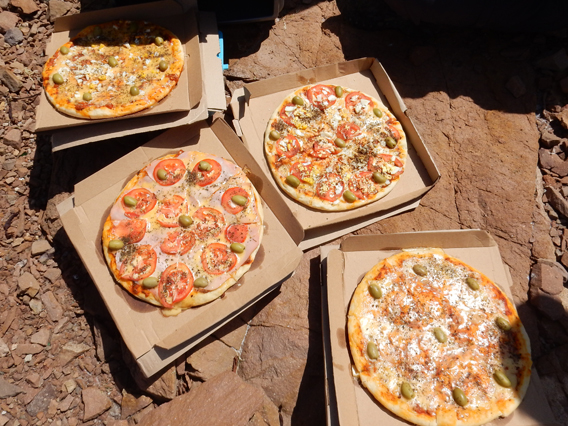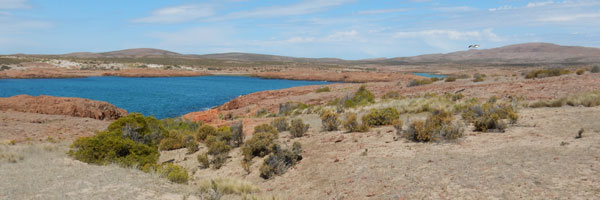A Trip to Caleta Sara
I started the day off with coffee and then watching the sunrise from the beach. The sun rose, but soon moved up into a bank of dark, ominous clouds. Out in the distance, rain could be seen falling over the Atlantic Ocean. A few drops of rain came down, but seemed to vanish as soon as they hit the dry desert ground. By the time we left to head out to the penguin colony, the rain had stopped and the clouds were starting to clear.
It was a particularly good day for observing penguin behavior, because they seemed to be in an especially feisty mood. Magellanic penguins will often challenge each other for possession of a nest and they perform this ritual in a loud display of prowess. Their braying and honking can be heard throughout the colony, as can be seen in the following video.
Sometimes the ritual gets intense and even violent, as can be seen in the following video. Notice the scua that swoops in to take advantage of the chaos, hoping to make off with an egg while the two penguins are off guard.
After we finished checking nests in the morning, we took a short trip to have lunch on a nearby beach. We drove to Caleta Sara, a spectacular inlet with deep blue water that etched a sinuous line into the Patagonian desert. We sat on a dry rocky ledge just above the beach and enjoyed four different varieties of pizza. This was more of a thick crust pizza, compared to what we had at Alma Patagónica, but equally delicious. It tasted especially good sitting out in this overwhelming landscape with good company.

Delicious pizza makes a great lunch in the Patagonian desert
We got back to Camarones in the late afternoon and Geno took us on a little walking tour of the town to do some shopping and visit with some local artisans. The first place we stopped was Almacenes de Lana, a small shop that carried handmade crafts from around the province of Chubut, but mainly specialized in wool clothing. Silvia, the proprietor, explained to us the process of taking the raw wool, cleaning it and combing it, and preparing it to be spun. She showed us her workshop, where several spinning machines were set up to turn the wool into yarn.

Silvia demonstrates and indigenous tool used to spin wool into yarn
In one corner of the room was a large loom for weaving the yarn, where Silvia was currently working on an intricate gaucho belt. She gave us a demonstration of the spinning machines, which are European in origin, and then showed us a tool that was used by indigenous people to accomplish the same task. It made use of gravity to create the spinning motion that then pulls the wool in and transforms it into yarn.
| Next up: Island of the Sea Lions |


© 2016 Michael Hanrahan